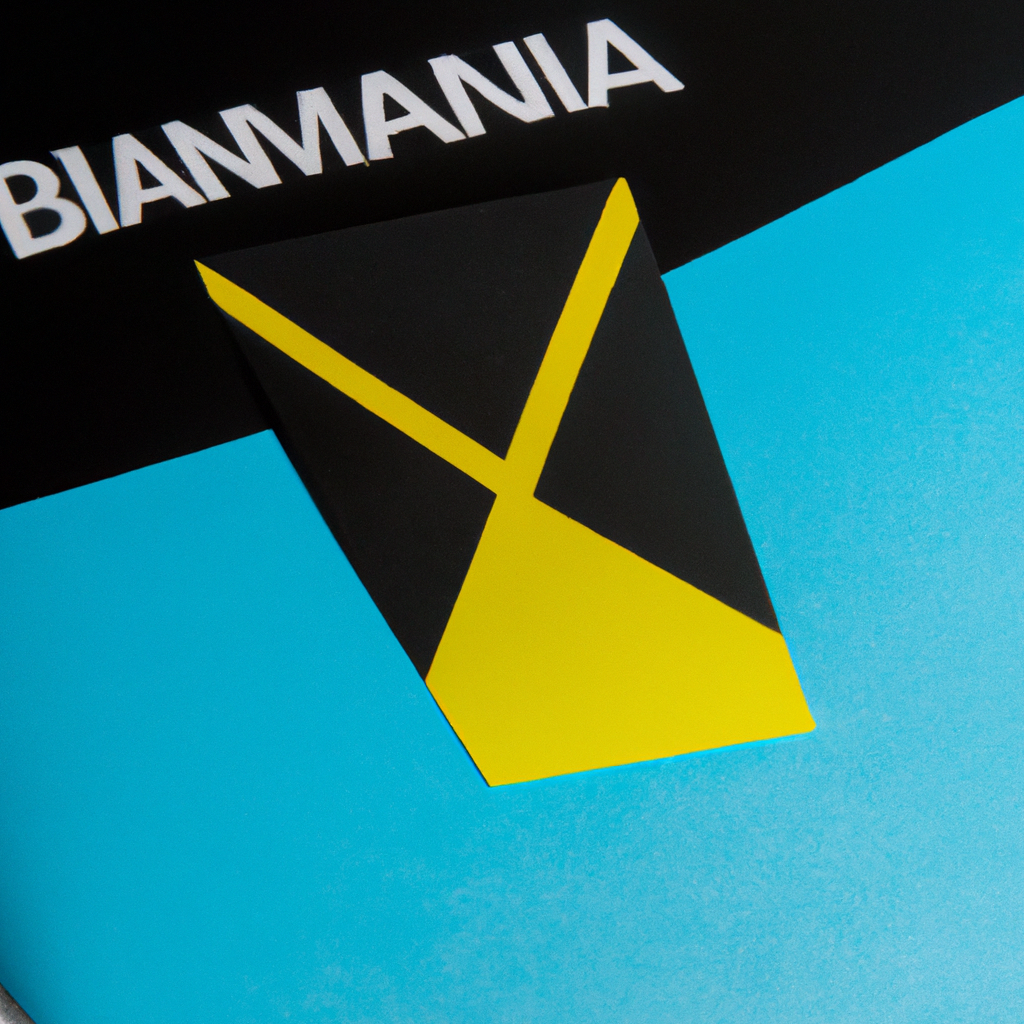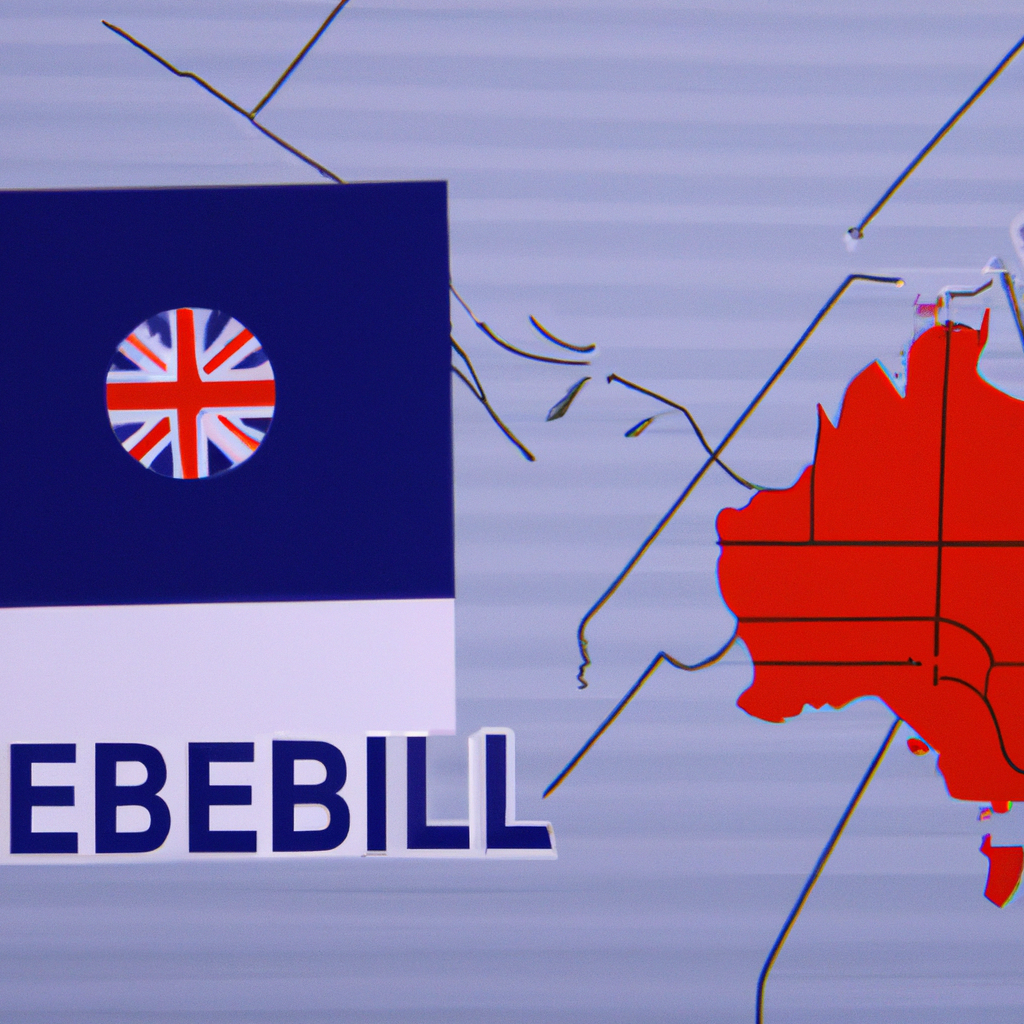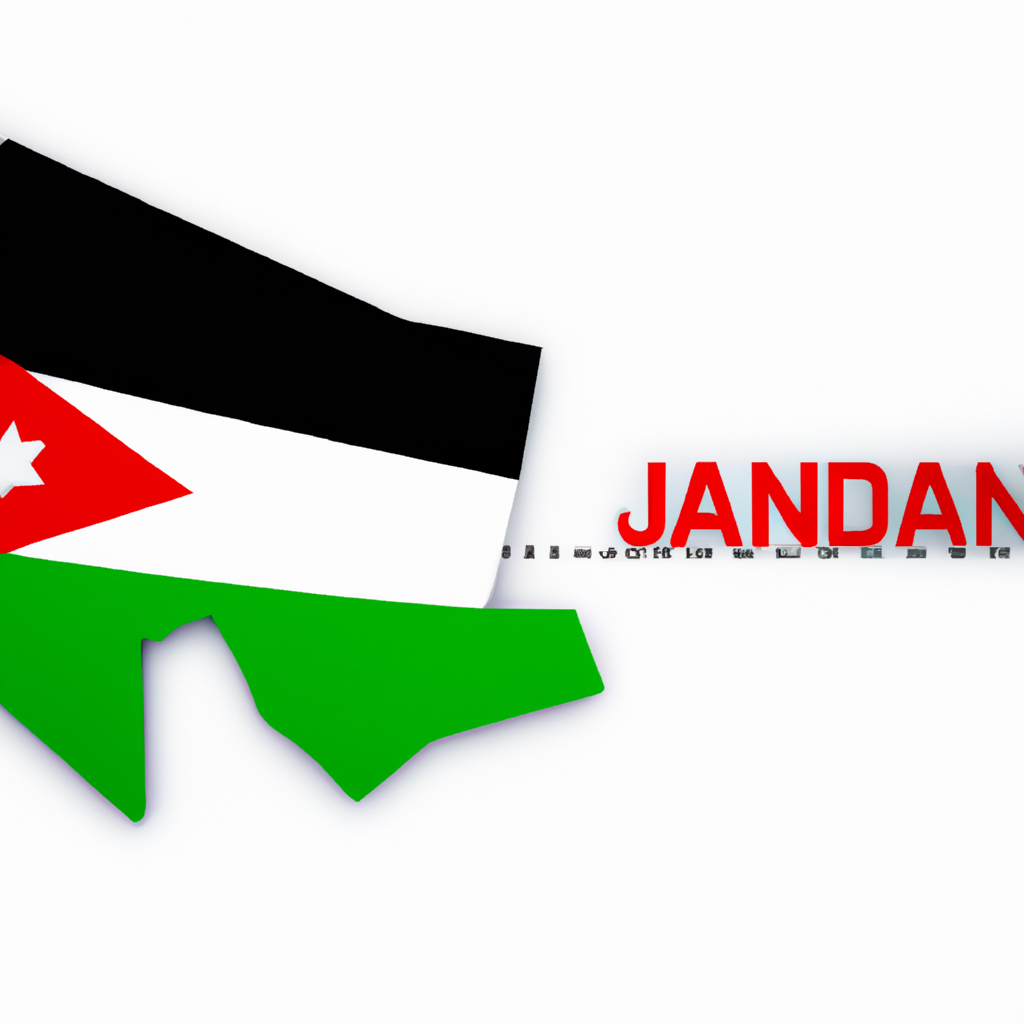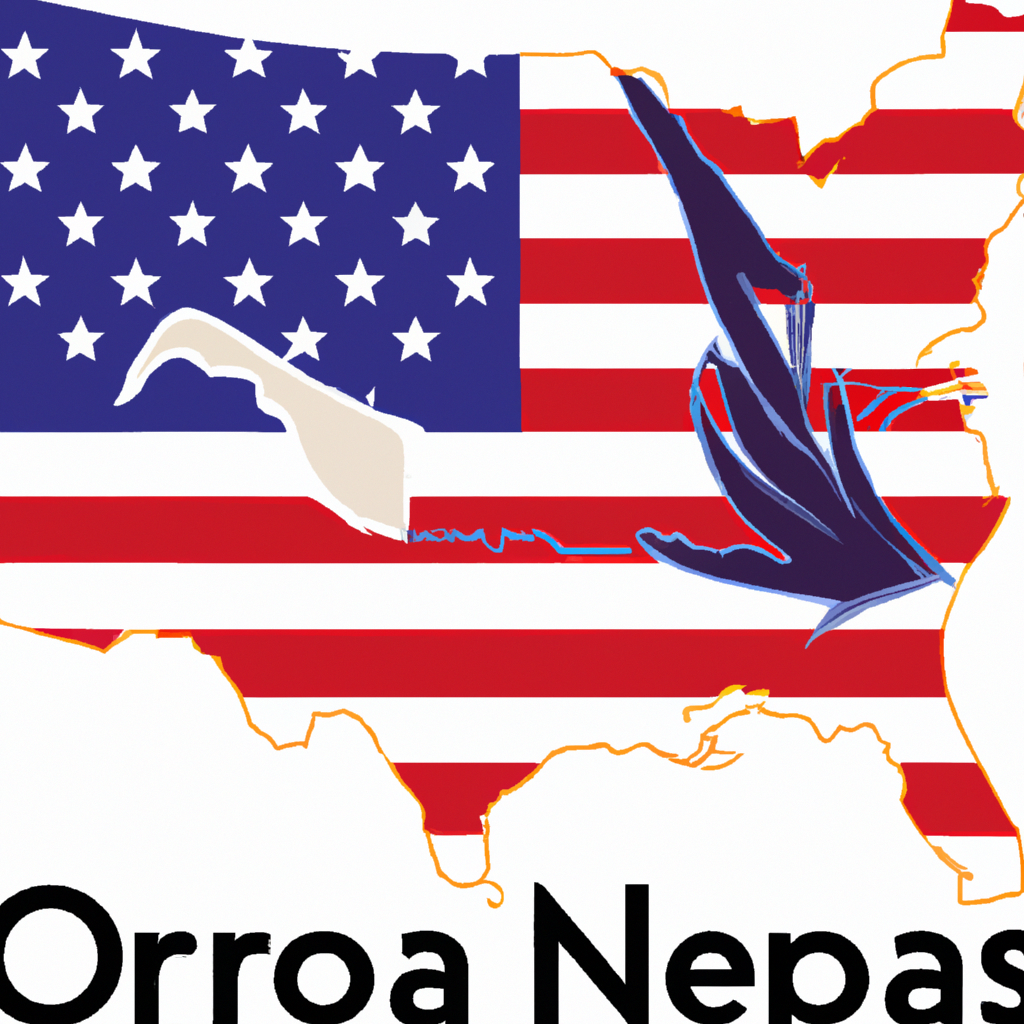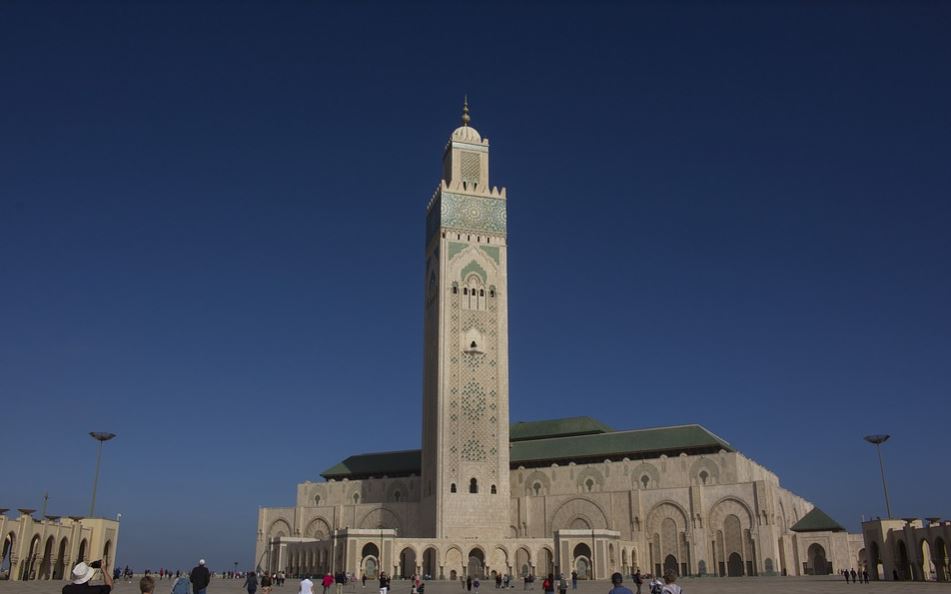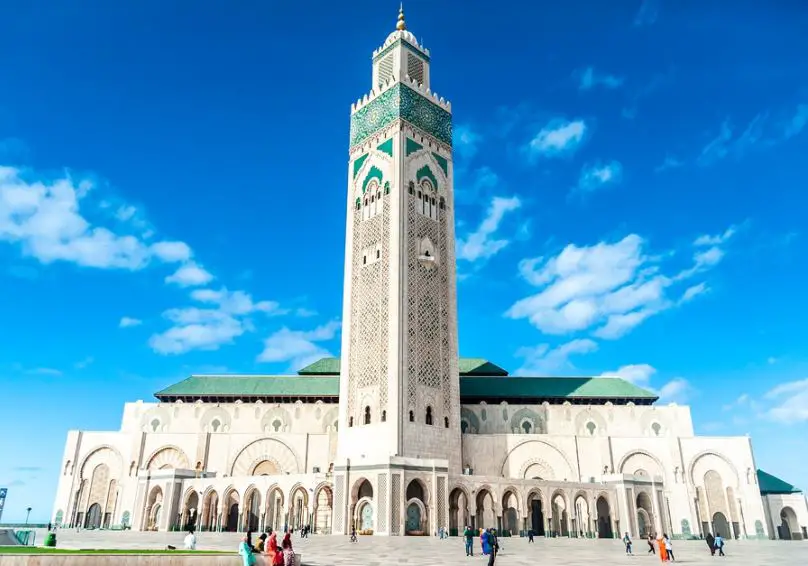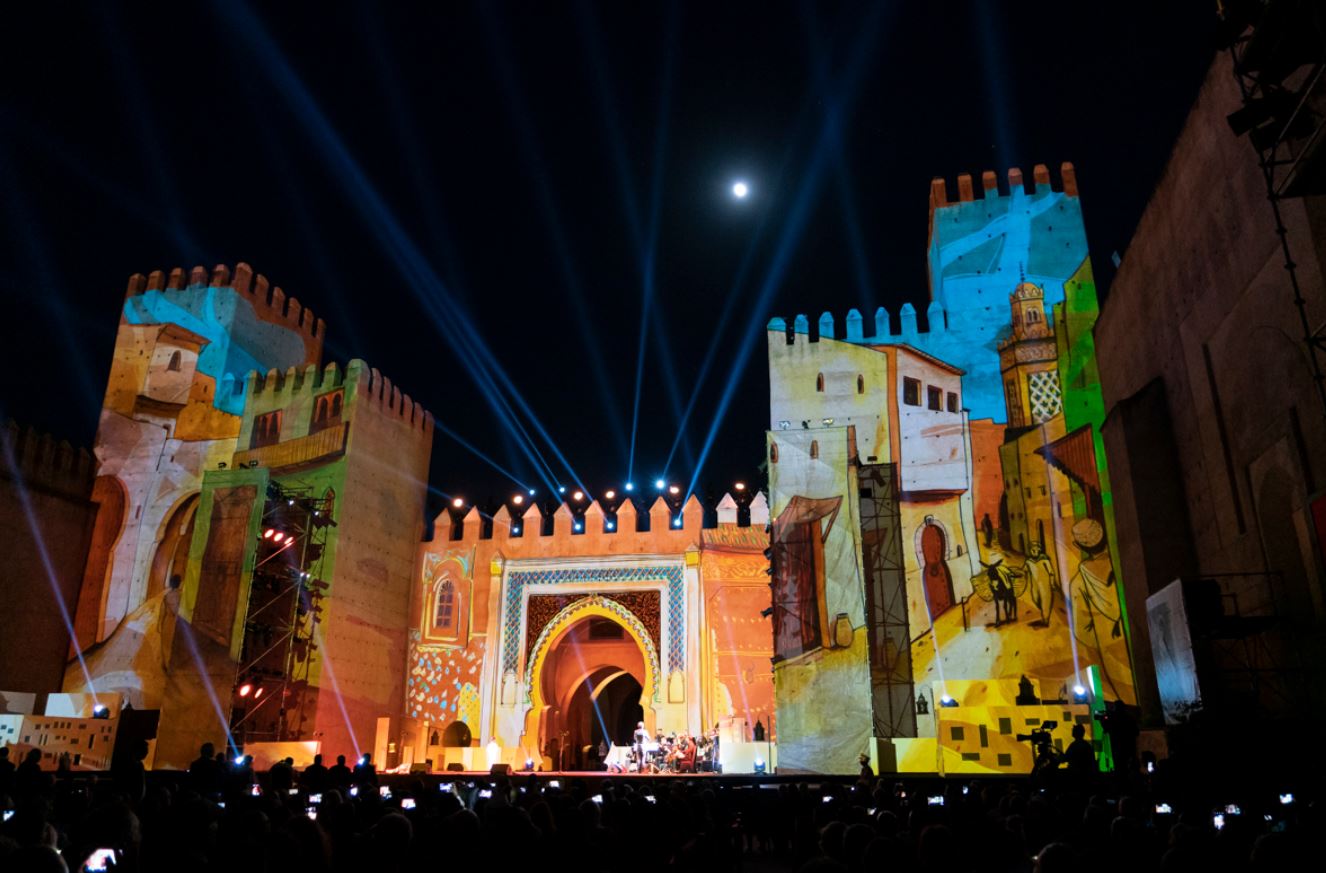Casablanca, Morocco: Interesting Facts,History, Things to do,Why to Visit
Post ByAdequate Travel
Casablanca is a fascinating port city located in the northwest of Morocco, on the Atlantic coast. Rich in history and unique in the cultural and religious extremes that can be experienced here, Casablanca is a place of discovery for any traveler. From illustrious French colonial monuments to the majestic Hassan II Mosque, a spiritual structure so large that it can fit up to 25,000 people at a time, tourists have many interesting things to explore in this city. There are plenty of activities and experiences in Casablanca that will give travelers a glimpse into the cultural identity of Morocco. Shopping, strolling through old neighborhoods, and enjoying the great food are just a few of the activities that visitors can savor during their stay in Casablanca. And of course, a visit to Casablanca will not be complete without exploring the many historic sites and monuments, some of which date back centuries. With the perfect combination of history, culture, and attractions, Casablanca is the perfect destination for anyone who loves to explore and discover.
Morocco is a country located in North Africa. It is known for its rich history, diverse culture, and stunning landscapes. The country has a population of around 36 million people and its capital city is Rabat. Morocco is famous for its historic cities such as Marrakech, Fes, and Casablanca, which attract tourists from all over the world. The country is also known for its beautiful beaches along the Atlantic coastline and the picturesque Atlas Mountains. Morocco is a constitutional monarchy with King Mohamed VI as the current ruler. The economy of Morocco is primarily based on agriculture, tourism, and manufacturing. The country is also known for its traditional handicrafts, delicious cuisine, and vibrant marketplaces. Overall, Morocco offers a unique blend of ancient traditions and modern development, making it a popular destination for travelers.Discover the untold stories behind morocco unique facts, and historical treasures.
Interesting facts
1. Diverse Geography
Morocco is a country with a diverse geography that encompasses several distinct regions. These include the Atlas Mountains, Sahara Desert, Atlantic coastline, and fertile plains. The Atlas Mountains stretch across much of the country, providing beautiful landscapes and opportunities for hiking, skiing, and exploring remote Berber villages. The Sahara Desert, one of the largest desert areas in the world, offers visitors the chance to experience camel trekking and overnight stays in desert camps. The Atlantic coastline is known for its stunning beaches and charming seaside towns, while the plains provide agricultural land for farming.
2. Unique Cultural Blend
Morocco is a fascinating blend of Arab, Berber, and French cultures. The majority of the population is Arab, with Berber communities also playing a significant role. This cultural mix can be seen in the architecture, cuisine, music, and traditions of the country. For example, the medinas (old towns) of Moroccan cities, such as Marrakech and Fez, showcase intricate Arab and Berber designs, while French influence can be observed in the colonial-era buildings and the widespread use of French language in business and education.
3. Rich History
Morocco has a rich history that dates back thousands of years. The country has been inhabited since prehistoric times and has seen the rise and fall of various civilizations, including the Phoenicians, Romans, Arab dynasties, and French colonialists. As a result, Morocco is filled with historical sites and landmarks, such as the ancient Roman ruins of Volubilis, the medieval fortress of Ait Ben Haddou, and the impressive royal palaces in cities like Rabat and Casablanca. These sites offer a glimpse into the country's past and provide valuable insights into its historical significance.
4. Exquisite Handicrafts
Morocco is renowned for its exquisite handicrafts, which showcase the craftsmanship and artistry of local artisans. Traditional Moroccan crafts include handwoven carpets, intricate metalwork, ceramics, leather goods, and woodwork. These products often feature intricate patterns, vibrant colors, and unique designs, reflecting the country's cultural heritage. Visitors can explore bustling souks (marketplaces) in cities like Marrakech and Fez, where they can find a wide range of handicrafts and take part in the rich tradition of Moroccan craftsmanship.
5. Vibrant Culinary Traditions
Morocco is known for its vibrant and flavorful cuisine, which combines various influences from Arab, Berber, and French cooking. Moroccan dishes often feature a blend of spices, such as cumin, coriander, turmeric, and cinnamon, providing a unique taste experience. Traditional dishes include tagines (slow-cooked stews), couscous, pastries like pastilla, and mint tea. Food is not just sustenance in Morocco; it is an important part of the country's culture and social gatherings. Visitors can enjoy exploring the local street food scene or indulging in traditional Moroccan dishes at restaurants or during homestays.
From museums to parks,morocco tourist attractions offer something for everyone, making it a versatile destination for all type of tourists.History of Morocco
Morocco, officially known as the Kingdom of Morocco, has a rich and diverse history. Situated in North Africa, the region has been inhabited by various indigenous groups for thousands of years before the arrival of foreign powers.
Ancient Times
In ancient times, the area that is now modern-day Morocco was inhabited by Berber tribes who had established their own kingdoms and trading networks. These indigenous groups, including the Numidians and Mauretanians, had developed sophisticated agricultural, trading, and cultural practices.
Example: The Numidians, who resided in what is now eastern Algeria and western Tunisia, were renowned horsemen and warriors. Their kingdom, known as Numidia, became a formidable power in the region.
Roman Occupation
In 42 AD, the Roman Empire conquered the region and incorporated it into the province of Mauretania Tingitana. The Romans introduced their language, architecture, and governance system to the indigenous population.
Example: Volubilis, located near present-day Fez, was a major Roman city and one of the best-preserved Roman ruins in North Africa. It showcases the architectural and cultural influence of the Romans.
Islamic Influence
In the 7th century, Arab conquerors brought Islam to Morocco, permanently reshaping the region's culture and religion. The Arab-Islamic era witnessed the rise of numerous Moroccan dynasties, such as the Idrisids, Almoravids, Almohads, and Marinids, who played significant roles in shaping Morocco's political and artistic landscape.
Example: The Alhambra in Granada, Spain, is a stunning architectural masterpiece influenced by the Moorish culture of Morocco and its dynasties.
European Colonization
In the late 15th century, European powers, including Portugal and Spain, began colonizing parts of Morocco. The European presence increased during the 19th and early 20th centuries, with France and Spain establishing protectorates in the country.
Example: The French built the city of Casablanca during their colonial rule, leaving behind architectural landmarks that still define the city's skyline today.
Independence and Modern History
Morocco gained its independence from France and Spain in 1956 and has since embarked on a path of modernization and development. The country has implemented political reforms, invested in infrastructure, and promoted tourism to boost its economy and improve living standards.
Example: The construction of the Tanger-Med Port, one of the largest ports in Africa, has positioned Morocco as a gateway for trade between Europe and Africa.
Exploring the rich heritage of historical sites in morocco is a journey through time and culture.Famous Things of Morocco
1. Moroccan Jardin Majorelle: One of the most famous attractions in Morocco is the Jardin Majorelle in Marrakech. This beautiful garden was designed by French painter Jacques Majorelle and later restored by fashion designer Yves Saint Laurent. Its vibrant blue buildings, exotic plants, and tranquil atmosphere make it a popular tourist spot.2. Moroccan Mint Tea: Morocco is well-known for its delicious mint tea, also known as "Maghrebi mint tea" or "Moroccan whiskey." This traditional drink is prepared by steeping green tea leaves with fresh mint leaves and sugar. It is often served in ornate tea sets and is a symbol of Moroccan hospitality.3. Moroccan Riads: Riads are traditional Moroccan houses or palaces with interior gardens or courtyards. Many of these riads have been converted into boutique hotels or guesthouses, offering a unique accommodation experience for visitors. Staying in a riad allows travelers to immerse themselves in the traditional Moroccan architecture and ambiance.4. Moroccan Souks: The vibrant marketplaces or souks in Morocco are a sensory delight for visitors. These bustling marketplaces offer a wide variety of goods, including spices, textiles, ceramics, carpets, and traditional handicrafts. Exploring the narrow alleys and haggling with local vendors is a must-do experience for those visiting Morocco.5. Moroccan Tagine: Tagine is a traditional Moroccan dish named after the distinctive clay pot it is cooked in. It usually consists of slow-cooked meat or vegetables, combined with aromatic spices, dried fruits, and nuts. Tagine dishes are flavorful and often served with couscous or bread, representing the rich culinary heritage of Morocco.6. Moroccan Architecture: Morocco is renowned for its breathtaking architecture, influenced by Arab, Berber, and European styles. The Hassan II Mosque in Casablanca is one of the largest mosques in the world and showcases intricate Moorish architectural elements. The Medinas (old cities) of Marrakech, Fez, and Chefchaouen are also famous for their stunning architecture and labyrinthine streets.7. Moroccan Sahara Desert: The vast Sahara Desert stretches across Morocco, offering a unique and unforgettable experience. Visitors can embark on camel treks or 4x4 tours to explore the golden sand dunes, spend a night in a traditional desert camp, and witness breathtaking sunsets and starry nights in the desert.8. Moroccan Music and Dance: Moroccan music and dance are vibrant and diverse, representing the country's cultural richness. Gnawa music, originating from the sub-Saharan African community, combines traditional African rhythms with Islamic spiritual chants. The traditional Moroccan dance known as "Raqs Sharqui" or "Belly Dance" is also popular, accompanied by lively music and colorful costumes.Discover some unique facts about morocco that will leave you amaze and intrigue.Culture of Morocco
Morocco is a diverse country located in North Africa. Its culture is a blend of Arab, Berber, and French influences, resulting in a unique and vibrant heritage. Here are some key aspects of Moroccan culture:Language
The official language of Morocco is Arabic, and it is widely spoken throughout the country. However, many Moroccans also speak Berber, especially in rural areas. French is also frequently spoken, especially in business and government sectors. This linguistic diversity reflects Morocco's history and the influence of different groups that have inhabited the region.
Religion
Morocco is predominantly an Islamic country, with over 99% of the population practicing Sunni Islam. Islam, being the state religion, plays a significant role in shaping the culture and daily life of Moroccans. Mosques can be found in every city, and the call to prayer can be heard five times a day. Islamic holidays, such as Eid al-Fitr and Ramadan, are widely celebrated throughout the country.
Food
Moroccan cuisine is known for its rich flavors and unique combinations of spices. Staple ingredients include couscous, tagines (slow-cooked stews), and various types of bread. The use of spices, such as cumin, ginger, and saffron, is common in Moroccan dishes. Mint tea, a symbol of Moroccan hospitality, is served throughout the day and is considered a national drink. A popular Moroccan dish is couscous with vegetables and meat, such as lamb or chicken.Art and Architecture
Moroccan art and architecture are highly influenced by Islamic and Moorish styles. Intricate geometric patterns, vibrant colors, and delicate tilework can be seen in mosques, palaces, and traditional houses. Marrakech, known for its stunning architecture, has many examples of Moroccan design, such as the famous Koutoubia Mosque and the Bahia Palace. Traditional crafts, such as pottery, carpets, and metalwork, are also significant aspects of Moroccan art.
Festivals and Celebrations
Morocco celebrates various festivals and events throughout the year, which showcase its cultural diversity and traditions. One notable festival is the Fes Festival of World Sacred Music, held annually in Fes, where musicians and performers from around the world come together to celebrate music and spirituality. Another important celebration is the Berber New Year (Yennayer), which signifies the start of the agricultural year and includes traditional music, dance, and feasts.In conclusion, the culture of Morocco is a fascinating blend of Arab, Berber, and French influences, which is reflected in its language, religion, cuisine, art, and celebrations. The country's diverse heritage has created a vibrant and unique cultural tapestry, making Morocco a captivating destination for travelers.Immerse yourself in the local culture by exploring morocco's top-rated tourist attractions.
Cuisine of Morocco
The cuisine of Morocco is a delightful blend of flavors and influences from various cultures, resulting in a rich and diverse culinary tradition. Moroccan cuisine is known for its unique combination of spices, aromatic herbs, and fresh ingredients, creating a tantalizing array of flavors and textures.
Influences on Moroccan Cuisine
1. Berber Influence:
The Berber people, who are the indigenous population of Morocco, have greatly influenced the country's cuisine. Traditional Berber dishes often feature staples such as couscous, tagines (slow-cooked stews), and preserved lemons.
2. Arab Influence:
With the Arab conquest of Morocco in the 7th century, Arabic influences made their way into Moroccan cuisine. Spices such as cinnamon, cumin, and coriander became prominent, adding a unique depth of flavor to various dishes.
3. Mediterranean Influence:
Being located on the Mediterranean coast, Moroccan cuisine has also been influenced by Mediterranean flavors. Olive oil, seafood, and fresh fruits and vegetables play a significant role in many Moroccan dishes.
4. Andalusian Influence:
During the reign of the Almoravids and Almohads, Morocco experienced an influx of Andalusian Muslims expelled from Spain. This led to the introduction of ingredients such as almonds, honey, and saffron into Moroccan cuisine.
Popular Moroccan Dishes
1. Couscous:
This traditional Moroccan dish consists of steamed semolina grains accompanied by vegetables, meat, and a rich broth. Couscous is often considered the national dish of Morocco and is enjoyed by locals and tourists alike.
2. Tagine:
A tagine is a slow-cooked stew made with a variety of ingredients such as meat, poultry, vegetables, and aromatic spices. It is traditionally cooked in a clay pot called a tagine, which helps to infuse all the flavors together.
3. Harira:
Harira is a hearty and comforting soup often enjoyed during Ramadan. This traditional Moroccan soup is made with tomatoes, lentils, chickpeas, meat, and a blend of spices, creating a flavorful and nourishing dish.
4. Pastilla:
Also known as b'stilla, pastilla is a savory pie filled with a delectable combination of pigeon meat, almonds, eggs, and an assortment of aromatic spices. It is a dish often reserved for special occasions and celebrations.
5. Moroccan Mint Tea:
A signature beverage of Morocco, Moroccan mint tea is a refreshing blend of gunpowder green tea, fresh mint leaves, and sugar. It is often served in small glasses with a sweet treat on the side.
Overall, Moroccan cuisine offers a delightful journey for the taste buds, with a blend of flavors and influences that reflect the country's rich history and cultural diversity. From the enticing aromas of tagines to the subtle sweetness of Moroccan mint tea, the cuisine of Morocco never fails to captivate and satisfy.Exploring the city's diverse neighborhoods is one of the best ways to discover the best morocco attractions, each with its own character and charm.Exploring the Medina of Marrakech
One of the top things to do in Morocco is to explore the vibrant Medina of Marrakech. Located in the heart of the city, the Medina is a maze-like cluster of narrow streets filled with shops, markets, and historical landmarks. Wander through the bustling souks, where you can haggle for traditional crafts, spices, and textiles. Don't miss visiting the stunning Koutoubia Mosque, the Bahia Palace, and the Ben Youssef Madrasa.
Visiting the Atlas Mountains
A trip to Morocco would be incomplete without a visit to the Atlas Mountains. This mountain range stretches across the country, offering breathtaking landscapes and outdoor activities. Explore the picturesque valleys, hike to the summit of Mount Toubkal (the highest peak in North Africa), or visit the traditional Berber villages nestled among the mountains. The Atlas Mountains also make for a great escape from the bustling cities and provide a serene and peaceful environment.
Experiencing the Sahara Desert
Another must-do activity in Morocco is an adventure in the Sahara Desert. Witness the mesmerizing sand dunes, take a camel trek across the golden sands, and spend a night in a traditional desert camp. Experience the dramatic sunrise and sunset over the vast desert landscape and indulge in stargazing at night. The Sahara Desert offers a unique and unforgettable experience that shouldn't be missed.
Exploring the Blue City of Chefchaouen
The town of Chefchaouen, known as the Blue City, is a magical destination that should be on every traveler's list. Its distinctive blue-washed buildings and narrow streets create a dreamlike atmosphere. Explore the charming medina, visit the Kasbah Museum, and immerse yourself in the vibrant local culture. The blue hue of the city creates an otherworldly ambiance that is truly captivating.
Visiting the Coastal City of Essaouira
Located on the Atlantic coast, Essaouira is a charming coastal city known for its beautiful beaches, fresh seafood, and historic medina. Stroll along the seashore, try your hand at windsurfing or kiteboarding, or simply relax and enjoy the laid-back atmosphere. The medina is a UNESCO World Heritage Site and is famous for its Portuguese architecture, bustling souks, and local craftsmen producing intricate woodwork.
Overall, Morocco offers a wide range of experiences that cater to different interests. Whether you're a history enthusiast, an adventure seeker, or simply looking to immerse yourself in a unique culture, Morocco has something to offer for everyone.When planning your trip to morocco, be sure to include the best things to do in morocco, which encompass a wide range of cultural experiences.Climate of Morocco
The climate of Morocco is diverse due to its geographical location, with a coastline bordering the Atlantic Ocean and the Mediterranean Sea, as well as the presence of the Atlas Mountains. It is classified as Mediterranean climate in the north and west, and semi-arid to arid desert climate in the central and southern regions.
Mediterranean Climate:
- The northern and coastal regions of Morocco experience a Mediterranean climate characterized by mild, wet winters and hot, dry summers.
- Average temperatures in the coastal areas range from 12°C (54°F) in winter to 27°C (81°F) in summer.- Rainfall occurs predominantly during the winter months, with an average of 700-800 mm (28-32 inches) per year.- Cities such as Tangier, Rabat, and Casablanca fall under this climatic zone.Semi-Arid and Arid Desert Climate:
- In the central and southern parts of Morocco, including the Sahara Desert, the climate is semi-arid to arid desert climate.
- Summers are extremely hot, with temperatures reaching as high as 45°C (113°F) during the day.- Winters are mild but can be cold at night, with temperatures dropping to around 5°C (41°F).- Rainfall is very limited, averaging only 100-200 mm (4-8 inches) per year, and often occurring as isolated thunderstorms.- Cities such as Marrakech, Fes, and Ouarzazate experience this type of climate.Climatic Influence of the Atlas Mountains:
- The Atlas Mountains have a significant impact on the weather patterns in Morocco.
- They create a barrier that prevents the moisture-laden Atlantic winds from reaching the inland areas, resulting in a rain shadow effect.- As a result, the eastern slopes of the mountains are drier than the western slopes.- The mountains also contribute to regional variations in temperature and precipitation across different parts of the country.Exploring the city's diverse neighborhoods is one of the best ways to discover the best morocco attractions, each with its own character and charm.Popular activities in Morocco
Heading to the beautiful country of Morocco offers a plethora of activities for travelers to enjoy. From exploring ancient cities and historic sites to indulging in adventurous outdoor experiences, here are some popular activities to engage in while in Morocco:
1. Exploring the bustling markets
One of the highlights of any visit to Morocco is exploring the vibrant markets, known as souks. These bustling markets are filled with a wide array of goods, from spices and textiles to traditional crafts and jewelry. The most famous market is the Marrakech Medina, where travelers can wander through the narrow, labyrinth-like streets and immerse themselves in the vibrant atmosphere.
Example: Discovering the colorful stalls of Jemaa el-Fnaa square in Marrakech, where snake charmers, food vendors, and street performers create a vibrant and lively ambiance.
2. Visiting the ancient cities
Morocco is home to several ancient cities that offer a glimpse into the country's rich history and architecture. A visit to cities like Marrakech, Fes, and Casablanca allows travelers to explore the stunning Moroccan architecture, visit historic landmarks, and delve into the country's cultural heritage.
Example: Exploring the medieval medina of Fes, with its narrow streets and impressive historical sites such as the iconic Al Quaraouiyine Mosque and the Bou Inania Madrasa.
3. Trekking in the Atlas Mountains
The Atlas Mountains provide a majestic backdrop to Morocco's landscape and offer excellent opportunities for trekking and hiking enthusiasts. Travelers can embark on scenic hikes, explore traditional Berber villages, and marvel at the breathtaking views of the surrounding valleys and peaks.
Example: Trekking through the Toubkal National Park, reaching the summit of Mount Toubkal, the highest peak in North Africa, and enjoying panoramic vistas of the Atlas Mountains.
4. Relaxing on the beautiful beaches
Morocco boasts a stunning coastline along the Atlantic Ocean and the Mediterranean Sea, dotted with beautiful sandy beaches. Relaxing on the beach, soaking up the sun, and enjoying water sports such as surfing and kiteboarding are popular activities in coastal towns like Essaouira and Agadir.
Example: Unwinding on the white sandy beaches of Agadir, known for its long stretches of coastline, mild climate, and excellent water sports facilities.
5. Experiencing desert adventures
A visit to Morocco wouldn't be complete without experiencing the enchanting Sahara Desert. Travelers can embark on camel treks, spend a night in a traditional desert camp, and witness the captivating sunset and sunrise over the vast sand dunes.
Example: Enjoying a thrilling camel ride through the golden dunes of Merzouga and spending a night in a nomadic desert camp, immersing oneself in the tranquility and captivating beauty of the desert.
No p tag is necessary for the heading within the h5 tag, as the tag itself denotes the heading.Plan your trip with a list of the best things to do in morocco, catering to all interests.Night Life in Morocco
When it comes to nightlife, Morocco offers a vibrant and diverse scene for locals and tourists alike. From bustling city centers to coastal towns, there are plenty of options to enjoy your evenings in this North African country.
1. Marrakech:
Marrakech is famous for its lively nightlife, particularly in the Medina area. Here, you can find numerous rooftop bars, clubs, and lounges where you can dance the night away. Places like Pacha Marrakech and Theatro offer live performances and international DJs.
2. Casablanca:
Casablanca is another city known for its vibrant nightlife. The city has a wide range of bars, pubs, and nightclubs catering to different tastes. The Corniche area is particularly popular with its beachfront clubs and lounges offering stunning views of the ocean.
3. Essaouira:
For a more relaxed nightlife experience, the coastal town of Essaouira is a great choice. Here, you can enjoy live music performances in intimate settings, often showcasing traditional Gnawa music or local fusion bands. The laid-back atmosphere and beautiful beach make it an ideal place to unwind after a busy day.
4. Agadir:
Agadir is a beach resort destination with a buzzing nightlife scene. The city offers a mix of beach clubs, bars, and discos, where you can dance until the early hours of the morning. It's a popular spot among tourists, especially during the summer months.
5. Rabat:
The capital city of Rabat also has its share of nightlife options. The Rue Mohammed V area is a popular spot for locals and visitors, with a variety of bars, clubs, and restaurants. The city's modern atmosphere and lively ambiance make it a great place to experience Moroccan nightlife.
In conclusion, Morocco offers a diverse nightlife scene with options ranging from bustling city clubs to relaxed beach lounges. Whether you prefer live music performances, beach parties, or vibrant clubbing, you can find something to suit your taste in this vibrant North African country.morocco tourist attractions offer a diverse range of experiences for every traveler.Reasons to Visit Morocco
1. Rich History and Culture
Morocco is known for its rich history and vibrant culture. With a blend of Berber, Arab, and European influences, the country offers a unique and diverse experience. Visitors can explore ancient ruins, traditional markets, ornate palaces, and magnificent mosques.
2. Fascinating Architecture
The architecture in Morocco is breathtaking. From the architectural wonders of Marrakech to the historic beauty of Fez, there are numerous examples of stunning buildings and intricate designs. Highlights include the Bahia Palace, Hassan II Mosque, and the Kasbah of the Udayas.
3. Beautiful Landscapes
Morocco boasts a variety of breathtaking landscapes, ranging from the vast Sahara Desert to the picturesque Atlas Mountains and the stunning coastal towns. Visitors can enjoy camel treks in the desert, hike through scenic valleys, or relax on idyllic beaches.
4. Exquisite Cuisine
Moroccan cuisine is renowned for its aromatic flavors and exotic spices. Traditional dishes like tagine, couscous, and pastilla are a must-try. Food enthusiasts can indulge in culinary delights at local restaurants or even participate in cooking classes to learn the secrets behind the delicious Moroccan cuisine.
5. Warm Hospitality
The Moroccan people are known for their warm and welcoming nature. Visitors can experience the famous Moroccan hospitality firsthand, as locals are often eager to engage in friendly conversations, share their culture, and provide assistance to travelers.
6. Vibrant Markets
Morocco's markets, known as souks, offer a vibrant shopping experience. From vibrant textiles and intricate ceramics to unique handicrafts and spices, there is something for everyone. The souks of Marrakech and Fez are particularly famous for their bustling atmosphere and diverse offerings.
7. Unique Festivals and Celebrations
Morocco hosts a variety of colorful festivals and celebrations throughout the year. The Festival of Roses in the town of Kelaat M'Gouna, the World Sacred Music Festival in Fez, and the Marrakech International Film Festival are just a few examples of the vibrant events that showcase the country's culture and traditions.
8. Adventure Activities
For adventure seekers, Morocco offers a range of exciting activities. From trekking to surfing, quad biking to hot air ballooning, there are plenty of opportunities to get your adrenaline pumping. The High Atlas Mountains and the coastal town of Essaouira are popular destinations for adventure enthusiasts.
9. Authentic Moroccan Riads and Hammams
Stay in a traditional Moroccan riad, a luxurious guesthouse with a central courtyard, to experience the country's unique accommodation. Additionally, visiting a hammam, a traditional Moroccan bathhouse, offers a rejuvenating and culturally immersive experience.
10. Film Locations
Morocco's stunning landscapes and architectural gems have made it a sought-after destination for filmmakers. Several famous movies and TV shows, including "Gladiator," "Game of Thrones," and "Lawrence of Arabia," were filmed in Morocco. Fans can visit these iconic film locations and relive their favorite scenes.
Whether you're a history buff or an adventure seeker, morocco has an attraction for you. So, don't miss the chance to visit popular places in moroccoNumber of Days Required to Visit Morocco
Morocco is a diverse and culturally rich country, offering a wide range of activities for travelers. The number of days required to visit Morocco depends on various factors such as the places you want to explore, your travel style, and personal preferences. Here are some factors to consider when planning your trip:
1. Major Cities or Highlights
If you plan to visit the major cities and popular highlights of Morocco such as Marrakech, Fes, and Casablanca, along with a few nearby attractions, a minimum of 7-10 days would be ideal. This will allow you to experience the vibrant culture, explore historical sites, and immerse yourself in the local atmosphere.
2. Desert Excursion
If you wish to embark on a desert excursion to experience the Sahara Desert and spend a night in a desert camp, you should allocate a minimum of 2-3 additional days. This will give you enough time to reach the desert region from either Marrakech or Fes, enjoy camel trekking, witness breathtaking sunsets, and stay overnight in a traditional Berber camp.
3. Coastal Towns
If you want to explore the coastal towns of Morocco, such as Essaouira, Agadir, or Tangier, add 2-3 more days to your itinerary. These towns offer beautiful beaches, water sports, and a unique blend of Moroccan and European influences.
4. Atlas Mountains
For mountain lovers, a visit to the Atlas Mountains is highly recommended. If you plan to hike, visit Berber villages, or simply enjoy the stunning landscapes, allocate at least 2-3 days to explore this region.
5. Customized Itineraries
If you have specific interests such as visiting Moroccan markets, experiencing local cuisine, or engaging in outdoor activities like trekking or surfing, consider adding a few extra days to your trip to fully immerse yourself in these experiences.
Remember, these are just general guidelines, and the number of days you spend in Morocco ultimately depends on your preferences and priorities. It's important to plan and research in advance to ensure you make the most of your time in this captivating country.
Uncover the best morocco attractions that will leave you awe-inspired and wanting more.Significance of Morocco
1. Historical Importance:
- Morocco has a rich and diverse history that dates back centuries. It was once a major center of trade, culture, and civilization, leaving behind significant historical sites and artifacts.
- For example, the city of Marrakech is known for its UNESCO World Heritage Site, the Medina, which is a medieval walled city filled with ancient palaces, mosques, and markets.
2. Cultural Diversity:
- Morocco is a melting pot of different cultures and ethnicities, blending Arab, Berber, and African influences. This cultural diversity is reflected in its architecture, cuisine, music, and arts.
- The country is also home to various indigenous tribes, such as the Berbers, who have managed to preserve their traditional way of life amidst modernization.
3. Geographical Beauty:
- From the stunning Sahara Desert to the beautiful Atlas Mountains, Morocco is known for its diverse and breathtaking landscapes.
- The coastal cities of Essaouira and Casablanca offer picturesque beaches and stunning views of the Atlantic Ocean.
4. Gateway to Africa:
- Morocco serves as a gateway to other African countries, making it an essential economic and cultural hub in the region.
- The country has strong diplomatic relations with many African nations and has played a significant role in facilitating regional partnerships and organizations.
5. Tourism and Economy:
- Tourism is a vital sector in Morocco, attracting millions of visitors each year. The country offers a wide range of attractions, including historic cities, vibrant markets, and world-class resorts.
- Additionally, Morocco is known for its agriculture, textiles, and handicraft industries, contributing to its economy and employment opportunities.
Overall, Morocco's significance lies in its historical importance, cultural diversity, geographical beauty, role as a gateway to Africa, and thriving tourism and economy.
From hidden gems to iconic landmarks, morocco has something for every traveler's taste.What is the currency of Morocco?
The currency of Morocco is the Moroccan dirham (MAD). The dirham is further divided into 100 centimes. It is recommended to exchange your currency to Moroccan dirham upon arrival at the airport or at local banks. There are also ATMs available in major cities where you can withdraw cash using your credit or debit card. It is always advisable to inform your bank about your travel plans to avoid any inconvenience while using your cards abroad.
What is the official language of Morocco?
The official language of Morocco is Arabic. However, French is widely spoken and used in government, business, and education sectors. English is also increasingly spoken, especially in tourist areas, hotels, and restaurants. It is helpful to learn a few basic Arabic or French phrases to navigate through the country and communicate with the locals. Often, locals appreciate the effort and it helps to enhance your travel experience.
Do I need a visa to travel to Morocco?
Visa requirements for Morocco vary depending on your nationality. Citizens of some countries may enter Morocco for a certain duration without a visa. However, citizens of other countries may need to obtain a visa prior to their arrival. It is recommended to check with the Moroccan embassy or consulate in your country to determine the specific visa requirements for your nationality. Ensure to apply for a visa well in advance to avoid any last-minute complications.
What is the best time to visit Morocco?
The best time to visit Morocco depends on the activities you are planning and the regions you intend to explore. Generally, the months of April to June and September to November are considered to be the most pleasant for travelers, with milder temperatures and less crowded tourist spots. However, Morocco offers diverse landscapes and climates, so it is advisable to research the specific region you plan to visit and choose the time of your visit accordingly.
Is it safe to travel to Morocco?
Morocco is generally a safe country for travelers. The local police and security forces are vigilant, especially in tourist areas, to ensure the safety of visitors. However, it is always recommended to take the necessary precautions and be mindful of your belongings, especially in crowded areas. It is also advisable to travel with a registered tour guide or join reputable travel agencies for certain activities or excursions to remote areas.
Examples of points in a paragraph:- The currency of Morocco is the Moroccan dirham (MAD).- ATMs are available in major cities for cash withdrawals.- Inform your bank about your travel plans to avoid any card issues.- The official language of Morocco is Arabic, but French is widely spoken.- English is also increasingly spoken, especially in tourist areas.- Learn a few basic Arabic or French phrases to communicate with locals.- Visa requirements for Morocco vary depending on your nationality.- Check with the Moroccan embassy to determine your specific visa requirements.- The best time to visit Morocco depends on your activities and the region you plan to visit.- Generally, April to June and September to November are pleasant months for travelers.- Morocco is generally a safe country for travelers.- Take necessary precautions and be mindful of your belongings.- Travel with registered tour guides or reputable agencies for certain activities.Uncover the best morocco attractions that will leave you awe-inspired and wanting more.

